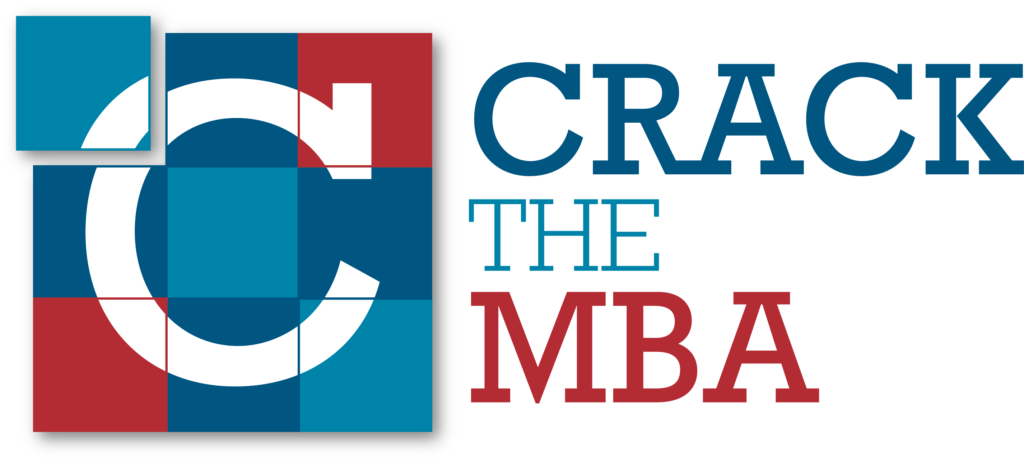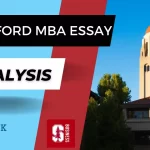How to create an impressive MBA resume
The key to getting into your preferred MBA school is to craft a resume that stands out from the crowd. Your resume is an opportunity to highlight the hard and soft skills that you picked up from the corporate world and how you will benefit yourselves and your peers in the business school.
One thing is certain: putting in the time and effort to make a strong MBA resume will help you get into top business schools like Harvard, Stanford, Wharton, and more, because of their highly competitive MBA application process.
But sometimes it can be hard to figure out what to put on your MBA resume.
You might be wondering how long your resume should be, what you should put on it, or if you need a different resume than the ones you’ve used before.

This blog post will teach you how to make yourself stand out as an MBA applicant by highlighting your strengths and developing a competitive edge.
What is an MBA resume and how is it different from a job resume?
The difference between an MBA resume and a typical employment resume is that it emphasizes your business acumen, the potential for leadership, and teamwork abilities rather than functional skills or specialized credentials. An MBA resume conveys your accomplishments and experiences, which helps to demonstrate your aptitude for business and explains why you’ve chosen to apply to an MBA program.
In a resume for a job application, recruiters usually want to see that you have technical skills and work qualifications that show you can do a certain type of job. For example, for data analytics jobs, they may be looking for Python and other similar skills. In that case, you’re up against other applicants who have backgrounds like yours. When it comes to MBA applications, you’re competing with people from a wide range of professional and academic backgrounds, so there aren’t any keywords you need to emphasize. This makes it even harder to figure out what to include.
MBA resumes being considered for admissions to business schools aren’t read by machines, but by people on the admissions committee. They look at your resume as an introduction to you – the applicant. So, your MBA resume needs to depict a complete picture of your life since college, including your accomplishments in both personal and professional realms. When we speak of personal realm, it could be things like activities or community initiatives in which you have excelled and made contributions.
An MBA resume should be short and crisp, and it shouldn’t be more than one page. It’s hard to make a one-page resume that stands out and shows how unique you are and why you should go to business school. You have to be able to put enough information on that one page to show how valuable you are to future employers you may be applying to.
What makes the MBA resume important?
Your resume is the keystone of your MBA application. It’s like an introduction to your life, experiences, achievements, and skills.
It is an important part of the application process in two ways.
- It can be used as a first filter. Before looking at your short answers, essays, or any other part of your application, the people in charge of admissions will look at your resume. They want to understand your general background, profile, and accomplishments and the resume is like a map that helps them understand who you are, at first glance.
- It gives a quick overview of your professional achievements. The people who decide if you get an MBA want to know what you have done in your career so far. This includes your job titles, career progression, and achievements you’ve had.
- It shows how well you can articulate. An MBA admissions committee will often read your resume before anything else, so it’s important to make a good impression. This means telling people what you’ve done in a clear and concise way.
- It can show that a person has leadership potential. Many MBA programs look for strong leaders, and a resume is a great way to show that you have these skills.
- If your application gets to the interview stage, the interviewers will use the resume you sent as a guide. This is because a resume is like a plan for an MBA application, and most MBA interview questions are based on the resume. Basically, an MBA interview is often based on what’s on the resume, which is especially true since many MBA admissions interviews use a blind interview format. In this way, the interviewer can only see your resume and not anything else about your application.
Now that you know what an MBA resume is and how important it is in getting an admit, let’s talk about how to format and create one.
MBA resume format
Length – Your MBA resume should be one page long. Consider using the second page only if you have more than ten years of work experience. For most applicants, their experience is under ten years so a one-pager will suffice.
Font type and size – Choose a readable font and use it consistently throughout your resume. A few good fonts are Arial, Times New Roman, Verdana, Tahoma, and Helvetica. Use a font size of 10-11px for normal text and 12-14px for headings and keep spacing of 1.0 or 1.15.
Margins – keep your margins at least 0.5” or more across all four dimensions.
Color scheme – Don’t use a bright color scheme for the resume.
File type – Save your MBA resume as a PDF when uploading it as part of your application or sharing it with other people.
Do you want to create an impressive MBA resume?
At Crack The MBA, we have helped hundreds of students get into top MBA programs around the world. We would be happy to help you too. Schedule a consultation with us today to learn more about how we can help you get into your dream school.
MBA Resume Layout
Divide your MBA resume into 3 sections
- Work Experience
- Education
- Volunteer Experience / Extracurriculars / Additional Information
Work Experience
This is a key section that may make up about two-thirds of your MBA resume if you have a few years of work experience or multiple employers. The best way to list your professional experience is in reverse chronological order, starting with your most recent employer and role.
Remember that this section should show how your career is growing and you are acquiring new skill sets in different roles. You would start by listing the company name, position, location, and period of employment in each role at each company. You would want to list out the different titles you’ve held at each employer so a reader has a sense of your progression.
For each job, make a list of two to six bullet points that describe what results you produced in that job. Don’t make your list sound like a job description. This is your chance to tell your story about the difference you’ve made and share important moments in your career. Focus on concrete accomplishments that show your leadership and impact on business to show that you are a good candidate for an MBA program. While there can be multiple different representations, one possible representation could be as follows:
Example:
ABC Corp – New Delhi | Marketing Manager | Oct 2020 – Present
- Managed a group of ten people to create and run successful social media campaigns that led to a 35% increase in client sales.
- Implemented a successful multi-platform SEO campaign that increased organic hits by 40% and landed 20,000 new subscribers in one year.
- Improved conversions by 30% by analyzing user behavior as part of the CRO (Conversions Rate Optimisation) campaign.
Education
This section will be more detailed for applicants with less work experience, but even applicants with a lot of work experience should include the most important parts of their education. These should have information about every degree you have held since college, from college to postgraduate education.
Here is the information you should put in this section of your MBA resume:
- School
- Program
- Major
- Date of Graduation
- GPA
- Awards/honors (if applicable)
- Involvement in activities
Share any extracurricular activities, college clubs, or opportunities to study abroad that highlight your business interests and leadership skills. Talk about what you’ve learned in school and how that has prepared you to be a leader in the business world. For example, you led the college debate team and won the nationals, or you campaigned for an NGO and added new volunteers from your college that improved the overall operations of the NGO.
The thing to remember here is that admissions officers care about your impact, not how many things you’ve done. Therefore, do not include a lot of activities without describing your impact. Admissions officers may think you’re padding your resume or spreading yourself too thin.
Example:
University of Delhi | Delhi, India | Graduated March 2016
- B. Com (Hons), GPA: 3.95 | Gold Medalist
- Study abroad: Summer school at LSE (Summer 2017) | Grade: A
- President, Entrepreneurship Club: raised $20,000 and organized 5+ events with 500+ students in attendance
In a business school resume, we do not need to list out education prior to your undergrad degree. Details about your life in high school are irrelevant from an MBA admissions standpoint. If you want to talk about any big things you did during this time, you can do so in your personal statement or essay.
Volunteer Experience / Extracurricular Activities
MBA admissions committees are seeking candidates with enthusiasm and leadership skills, and volunteer experience is a great way to demonstrate both.
Use this part to show the reader what you’re really interested in. The point is to show what you care about when you’re not getting paid for it. How do you spend your time when you’re not at work?
Don’t just list any extracurricular activities; instead, focus on adding high-stakes accomplishments that show your ability to focus, work hard, have a strong work ethic, be a leader, and work well with others. Every point you add here should be unique and interesting. These entries should also be things that you can have corroborated through background checks and should be in tune with what you communicate in your personal statement, essays, and other parts of your application.
Now, how do you know if an extracurricular activity is worth including in your resume? For example, running a marathon is a very impressive activity on its own. However, running a marathon to raise money for a cause is an even more impressive activity and should be highlighted in your resume. It shows how you can be a contributing member of the school’s community. An activity like going to the gym, while it shows discipline, may not give the readers as good a sense of your teamwork and leadership skills. On the other hand, if you have participated in martial arts and competed professionally, that could certainly be worth including.
Other Sections (Optional)
Awards and Achievements (Optional)
If you have a long list of awards and certificates that stand out, like the dean’s list, college sports awards or subject-related awards, volunteer certificates, industry awards, and so on, you may consider listing these in a separate section. Having said that, our recommendation is to list work-related achievements in the employment section and college-related awards and achievements in the awards section. This allows the reader to absorb this information more easily.
Do you want to create a resume that impresses the MBA adcom?
At Crack The MBA, we have helped hundreds of students get into top MBA programs around the world. We would be happy to help you too. Schedule a consultation with us today to learn more about how we can help you get into your dream school.
Top MBA resume mistakes to avoid
Not mentioning results or outcomes
A common mistake we see on MBA resumes is that they don’t list results or outcomes. The most important thing to convey through your business school resume is the quantifiable impact you created on your organization, clients or industry. In conveying your results, you absolutely want to list your actions that led to the specified impact. Include results, outcomes, or lessons you’ve learned from your experience that show how you’ve grown over time and how you’ve helped the business. Make actions and results your best friends in this process. This is how you will prove that you not only did these things but that you did them well.
Using too much jargon
MBA admissions officers are not specialists in all fields. Don’t assume that the person reading your resume knows everything there is to know about your industry. Most of the time, candidates who try to impress the reader by using complicated words or dropping names can fail to create the desired impact on the admissions reader. So, make your bullet points easy to follow so that anyone from any industry can easily understand the situation, the actions you took, and the results and their importance.
Lacking a clear career advancement
This may be the MAIN point of a resume: to show that you are growing as a professional. Have you ever gotten a promotion? Make it clear. This is the most critical component you must demonstrate. Even if you haven’t been promoted, show that your new positions involve more responsibility.
Final Thoughts
Be mindful to check if your target school restricts applicants to use pre-defined resume templates. Business schools might also have specific rules about how to name your resume file, how to format it, how long it needs to be, and so on. Check the school’s website for admissions requirements.
As part of our resume service, we give you expert advice on how to craft a resume that highlights your academic and professional accomplishments, leadership experiences, and the impact you created in your organization(s) or community. Fill out this form to get started.






